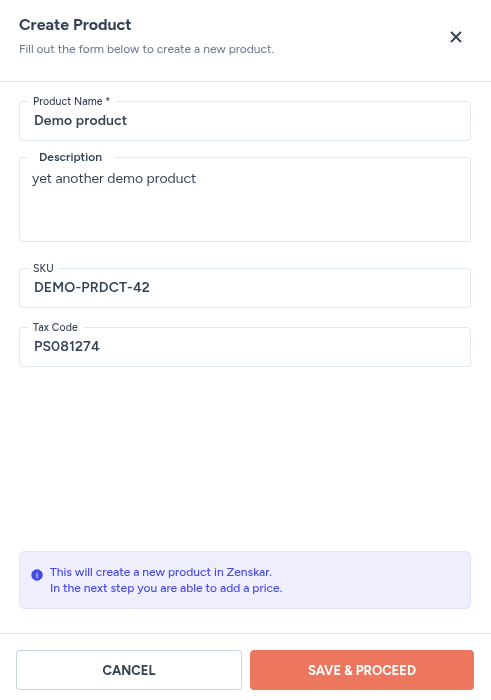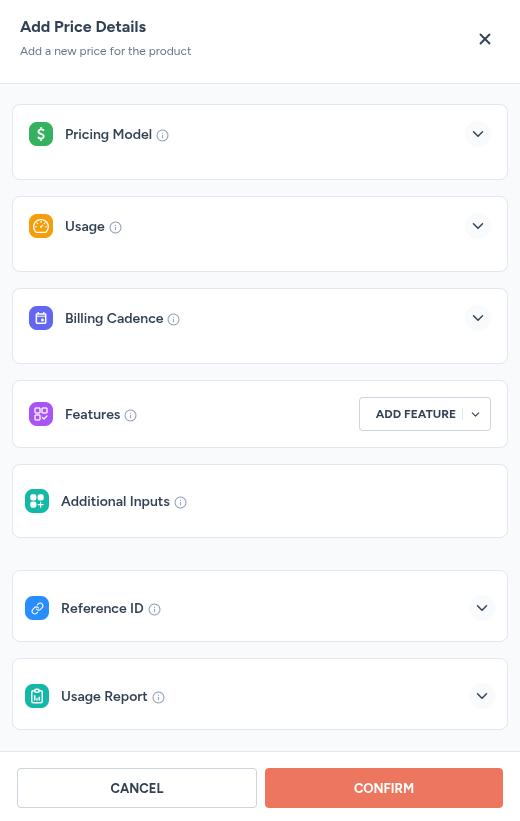Products
A Zenskar concept that defines any service or product you sell to your customer as part of a contract.
Steps to create a product
Preliminary steps
- Navigate to the Contracts section in the side panel.
- Select the Products option to open the Products page.
- Click on the + CREATE NEW drop-down menu and select the Product option to open the Create Product form.

- Click on the SAVE & PROCEED button. You will be taken to the Product Details page.
Add pricing details
- On the Product Details page, click on the + ADD PRICE.

- Fill in the following details:

Pricing model
Usage
🔄 Fixed vs metered consumption products
Zenskar supports two primary types of consumption-based products: fixed and metered.
| Type | Description |
|---|---|
| Fixed consumption | The customer is billed a predefined amount for a set quantity of usage, regardless of actual usage. Common in subscription plans with bundled usage. |
| Metered consumption | The customer is billed based on actual usage tracked during a billing period. Ideal for usage-based pricing models where consumption varies. |
📝 Example
| Scenario | Product type | Billing |
|---|---|---|
| 100 SMS per month included for $10 | Fixed | Always $10 |
| $0.05 per SMS sent | Metered | Varies based on usage |
Billing cadence
Billing cadence refers to how often a customer is invoiced during a contract. In Zenskar, billing can be either recurring or one-time, and the cadence defines the frequency and timing of these invoices.
Types of billing
- Recurring billing: Charges the customer at regular intervals. Zenskar supports cadences in terms of:
- Daily
- Monthly
- Quarterly
- Yearly
- One-time billing: Charges the customer once during the contract. Common for setup fees, deposits, or fixed deliverables.
Timing options
Zenskar supports both prepaid and postpaid billing:
- Prepaid: The invoice is issued before the billing period starts.
- Postpaid: The invoice is issued after the billing period ends.
These offsets can be configured at the phase level, allowing flexibility in how and when your customers are charged.
Reference ID
Specify a unique reference ID to enable seamless integration and identification across connected integrations.
Updated 4 months ago
